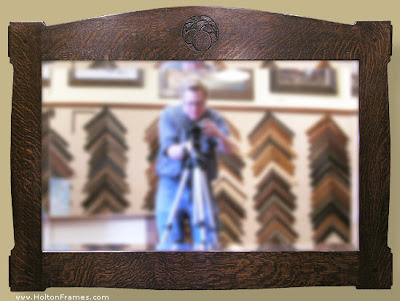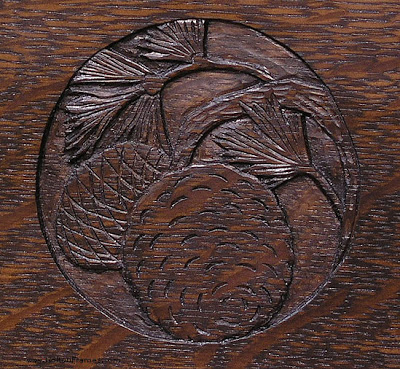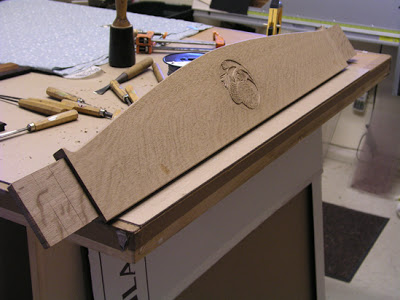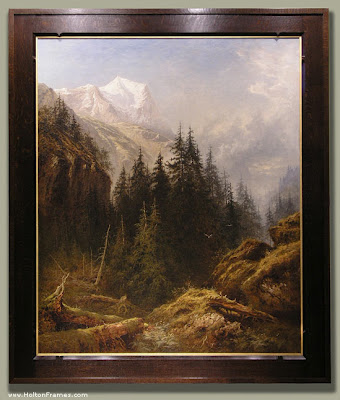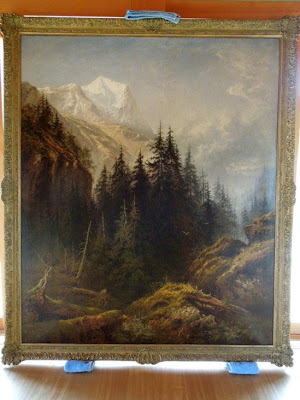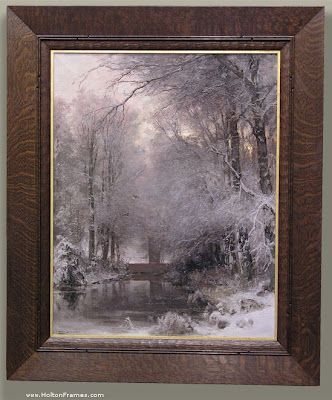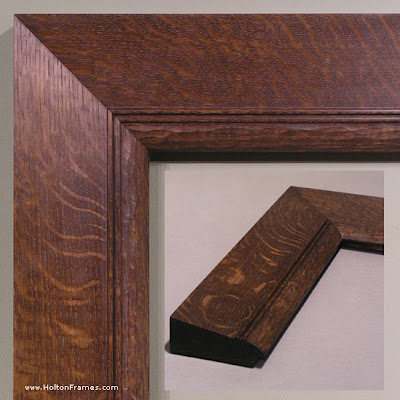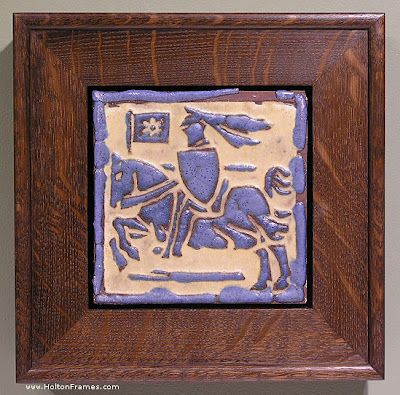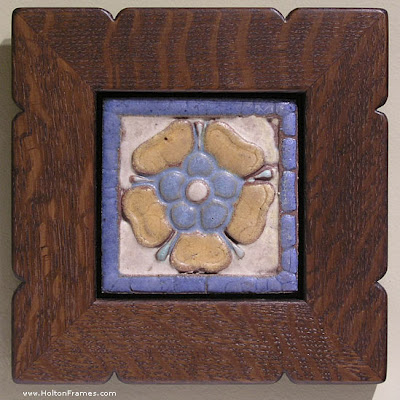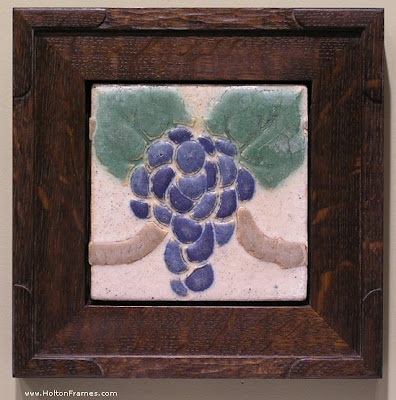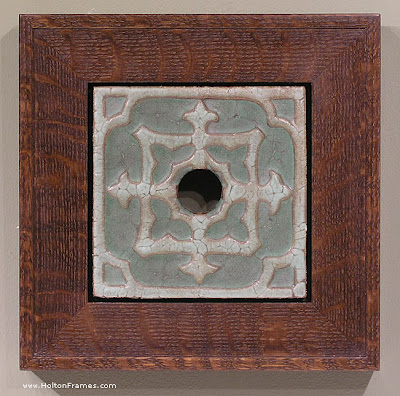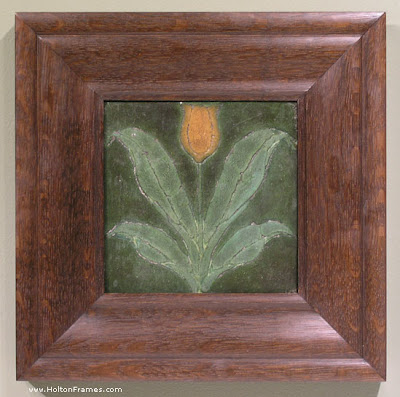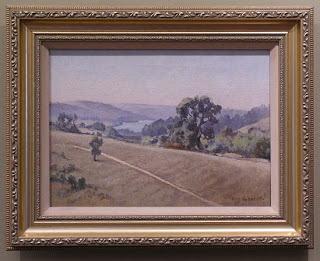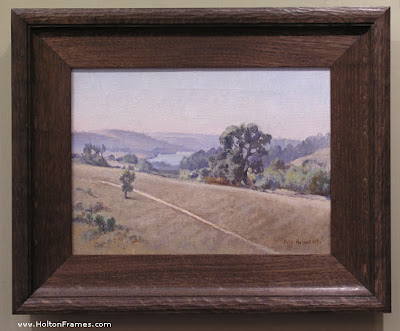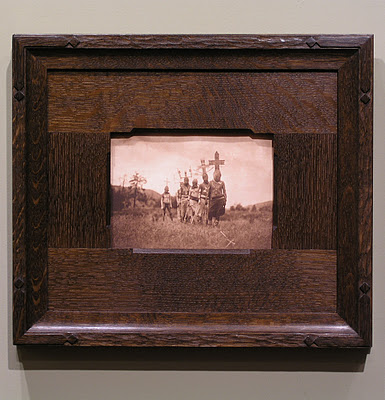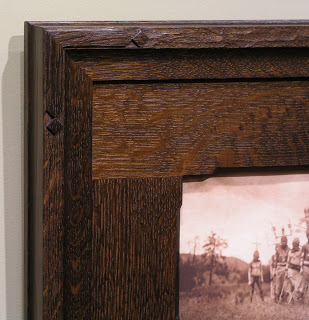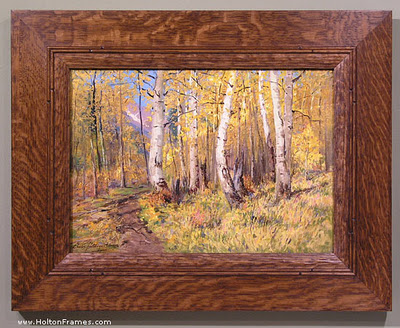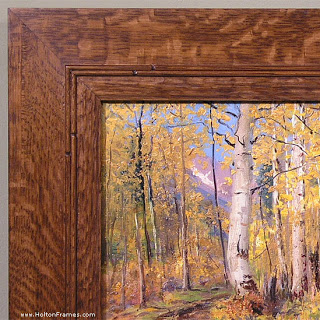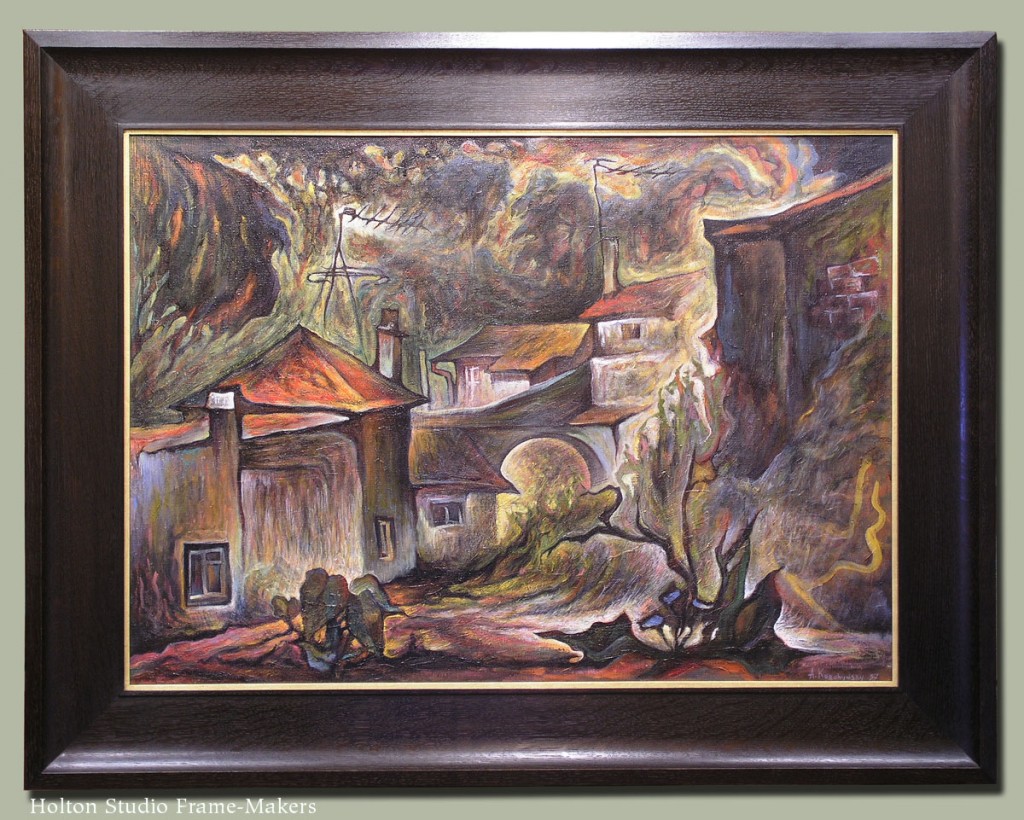Here’s a recently commissioned mirror. The design is based on that of a pair of frames I made years ago for two leather panels by CR Ashbee. This mirror is a horizontal adaption of that design, featuring at the top center a carved medallion with two pine cones. The outside dimensions of the frame are 36″ x 48″. The medallion is 4-1/2″ in diameter. Quartersawn white oak with Medieval Oak stain.
Archives
Framing a Benjamin Williams Leader Landscape
Just finished framing this spectacular 1875 Alpine landscape oil painting by British artist Benjamin Williams Leader (1831 – 1923), titled “The Wetterhorn from Rosenlaui.” At 72″ x 60″ it has a powerful presence (see last photo for scale). Commissioned by a Member of Parliament, John Derby Allcroft, the year it was painted it was displayed at the Royal Academy, where Leader’s work was shown in every summer exhibition from 1854 through 1922.
We made a 6″ wide stained quartersawn white oak compound frame with a chamfered mortise-and-tenon flat and gilt oak liner. The chamfer has carved points that articulate the corners with a detail that also picks up a form pervasive in the painting.
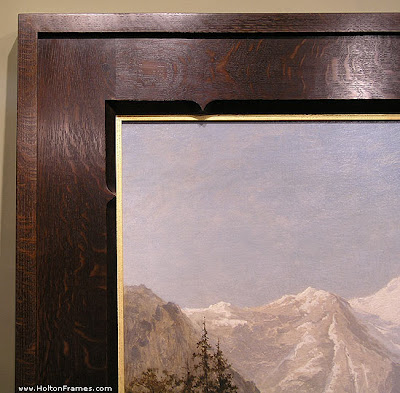 |
| Corner detail |
Below is the painting in its old Victorian makeshift frame—a conventional 19th century exhibition frame heavy on compo (molded plaster-like material meant to pass itself off as carving).
Clearly influenced by John Ruskin’s pleas to painters to go to nature, to see her both truly and reverently—and sharing with Ruskin a passion for the Swiss Alps—Leader contributed in his way to the great project of re-framing art, led by Ruskin and the Pre-Raphaelites. I wonder if, while breaking with convention on the canvas itself, he followed the Pre-Raphaelites, Whistler and others to make his ideals real in the form of the picture frame itself. If so, I hope our efforts would have met with his approval.
This is the third Leader we’ve had the privilege of framing. Another is on my site, here.
View this Leader in the Portfolio…
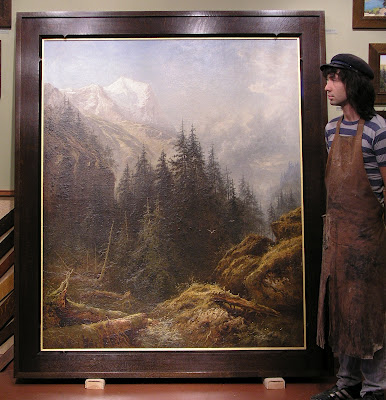 |
| The painting with Eric Johnson next to it to give a sense of scale (Eric’s over 6′ tall). |
Framing Louis Apol
Here’s a notable historical work for you. Just framed this beautiful European landscape by Louis Apol (Dutch, 1850-1936), “A Forest in Winter” (oil on canvas, 32 x 25). (Click image for a larger view.)
The stained quartersawn white oak frame is a 4-1/2″ wide slope with a carved cushion sight edge. The double reeding outside the cushion, with carved stops near the corners are a nod to the delicate strokes that define the trees, and give the frame a degree of refinement in sympathy with the artist’s well-honed touch. The 1/4″ gilt slip catches the sunlight. We were aiming for a suitably rustic but sensitive feel, a quiet mood, simple. No “before” shot of this in a gold frame, but can you see how the dark wood suits the painting much better than a gold one would? How it’s like the shadows in the painting, and how the shadowy feel of the frame leads your eye to the picture and acts as a foil to the picture, and in particular to the sunlight? And, of course, the rustic feel connects you to the rustic subject matter much more successfully than would a gold frame.
Below is a corner sample of the frame design (without the carved stops on the reeding).
Framing Grueby Tiles
Framing a Grueby Tile
We just shipped out this beautiful 6″ Grueby tulip tile to a customer in Ohio. The soft and subtle form of the leaves suggested a very feminine frame and inspired this adaptation of our Holland profile.
For more on framing Arts and Crafts tiles, see this older entry.
Re-framing William Hubacek
Just framed this 10″ x 14″ oil on canvas by notable Californian William Hubacek (1871-1958), rescuing it from a cheap gold setting. The job offers a good before-and-after, and a good example, I think, of how a frame helps or hinders your ability to see the picture:
The frame’s flat coving up to a carved cushion back edge. In quartersawn white oak with Weathered Oak stain. Very oak-y. Much more sympathetic to the spirit of a very lovely painting.
Framing a small Edward Curtis—Another Carved Corner Design
Recently framed this small original Edward Curtis photogravure of Apache Indians for a couple in Texas. The print had wide margins, but we wanted the effect of framing it close so used a lap-joined flat — kind of a wooden mat, although on top of the glass. We’ve taken this approach a number of times before.
Also wanted to show the carved corner design. Both the corner design and the chamfer on the flat, which has 45 degree angled stops, echo the headdresses in the photo.
Framing Charles Partridge Adams—Simple Corner Carving
We recently got to frame this early twentieth century landscape by Charles Partridge Adams (1858-1942). At just 10″ x 14″, it’s humble in size as well as subject matter, and loosely painted—all aspects suggesting a fairly simple frame with a bit of carving.
The tree trunks brought to mind the profile we’d come up with a few months ago for Paul Kratter’s view of Lake Tahoe, “Twisted Pine Above Emerald Bay,” below—a flat with a double reed near the sight edge and a carved flattened ovolo (convex form) at the sight edge—but I thought I’d refine it a little, adapting it to Adams’s more “dapple-y” style. 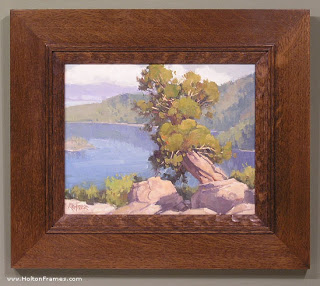
So I decided to enhance the lines formed by the double reeds. So added a simple pattern of carved stops to the reeds near the corners. I’m pleased with the effect. I’d like to do more with simple corner carving this year.
Framing Contemporary Paintings—Andrij Korchynsky
This recent job, a 23″ x 32″ contemporary oil painting on canvas by Ukrainian-American artist Andrij Korchynsky, offers a simple lesson in two key elements in frame design: line and form. Despite the loose style, the sweeping lines and angularity of the roofs suggested the form of the profile—a broad, 4″ flat sweeping up to a scoop and then beveling back. (The profile is No. 321.) With respect to line, a narrow raised panel at the sight edge, at the same width as the lines defining the structures, adopts the painter’s standard. A 1/4″ liner oil-gilded with 23 kt gold leaf gives it just the right highlight in keeping with the painting’s palette.
The wood is quartersawn white oak with Saturated Medieval Oak stain.
